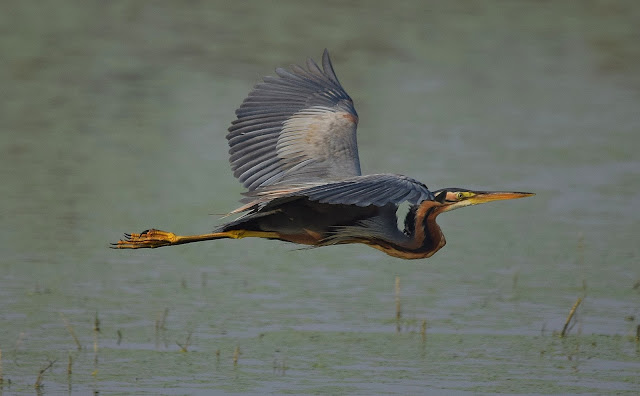For a photographer and a naturalist, the moments that matter in the wild are spotting of an animal or bird, preferably in action. Not just spotting the animal but also to be able to take a good picture of the species, with good clarity and in proximity. These opportunities don't present themselves very often. They are rare. I have met people who have been to various parks in the India and other parts of the world but have never spotted the species that they wanted to spot, most of the time the species in question ends up to be right on top of the food chain. Hence smaller in number and difficult to spot. I don't know what to make of it. Is it bad luck? Bad tracking technique? Or just lack of patience? In any case, when they see some good pictures that my friends or I have taken, they exclaim, complain, and sigh in disappointment.
TATR in particular has never disappointed me. Every time I have been there since 2009, I have seen a tiger in action, sometimes at very close proximity. Pictures that some others who frequent the place from Hyderabad have taken are just amazing! They spare no expense to get a good shot of the 'Tiger' the apex predator, also some other resident birds that are found there. Apart from Tadoba, which lately has become very popular for sightings of the tiger and leopards, there are other places in Maharashtra that are picking up pace for their sightings and the government is investing in developing these parks which is good news. Tippeshwar is one such place. I just hope other states of the country emulate what Maharashtra has done and start to protect forests so that we can get more opportunities to visit the wild and also protect and conserve animals in the wild.
Telangana has lovely, thick forests in Adilabad district but for some reason the forest department is not spending time and money to conserve them. There are claims that there are tigers in Kaval Tiger reserve in Adilabad. If there are tigers, where are they now? Are they disappearing? Are they falling prey to hunters and poachers? No one has a clue. Tourism makes officials accountable. People tend to ask questions about where tigers are once they have been spotted in the forest. The forest officials are forced to collar them, track them and ensure their safety. The regular tiger census is also carried out with a lot of care to ensure the right numbers are reported. Unfortunately, no such thing is happening in the Adilabad forests. I think its pure neglect.
While looking for the Apex predator you end up finding some nice subjects to photograph like the one below. Throughout the forest you hear mating calls, this stag here looks like he is looking for his lost mate.
Honey buzzards are plenty in the Tadoba forests. They are found near the Tadoba lake often quenching their thirst. Raptors are always beautiful to photograph. This bird walked step by step towards the lake and had a drink while we were photographing it.
Below are two serpent eagles play fighting. We tried playing various calls from our mobiles, the serpent eagles were the most reactive. They responded and kept looking for the source of the calls. Interesting!
Finally, we were lucky to spot Maya in her territory. She is as beautiful as ever. Unfortunately we were not a able to get a head-on shot, we were behind her but still amazing to look at! Without fail, all tourists get into a tizzy when they see a tiger. Maya is known for her bold nature, she chooses to walk next to jeep for a long time. In this case there were too many of them, too many tourists, too many cameras. I am sure the most patient tiger/tigress would also be irritated. She slowly disappeared into a fire line near the Pander Pavni lake # 2. Pander Pavni seems to be Maya's stronghold and her mate's - Matkasur! We hoped to spot Maya's cubs but we couldn't do so.
Below Maya marks her territory. She wants to ensure no other tigress comes into her territory. Males are ok, but females no way! Tiger behavior - the males defend their territory against any other male and females defend their territories against other females. Mating rights and availability of food seem to be the focus for tigers. Lions are slightly different, females have a support system and live in groups. They hunt in groups as well. The males display a similar behavior, much like tigers, they defend territories and mate with multiple females.
The occasional dance of the peacock breaks the boredom while waiting for tigers to arrive.
The best for the last! This is the moment that really mattered to us. These two cubs that we spotted put up a show for us for at least 45 mins. They were lovely to photograph. They were shy for sometime but then they came out and stayed around long enough for us to take wonderful shots of them.
They are both males and brothers. The first once chose to sit on a man-made bridge, close to where we were.
Soon the second one crossed the road and chose to join the first. (Below)
An affectionate kiss on the cheek, one brother to another.
Finally this sitting pose by one of the brothers made our day!



























































